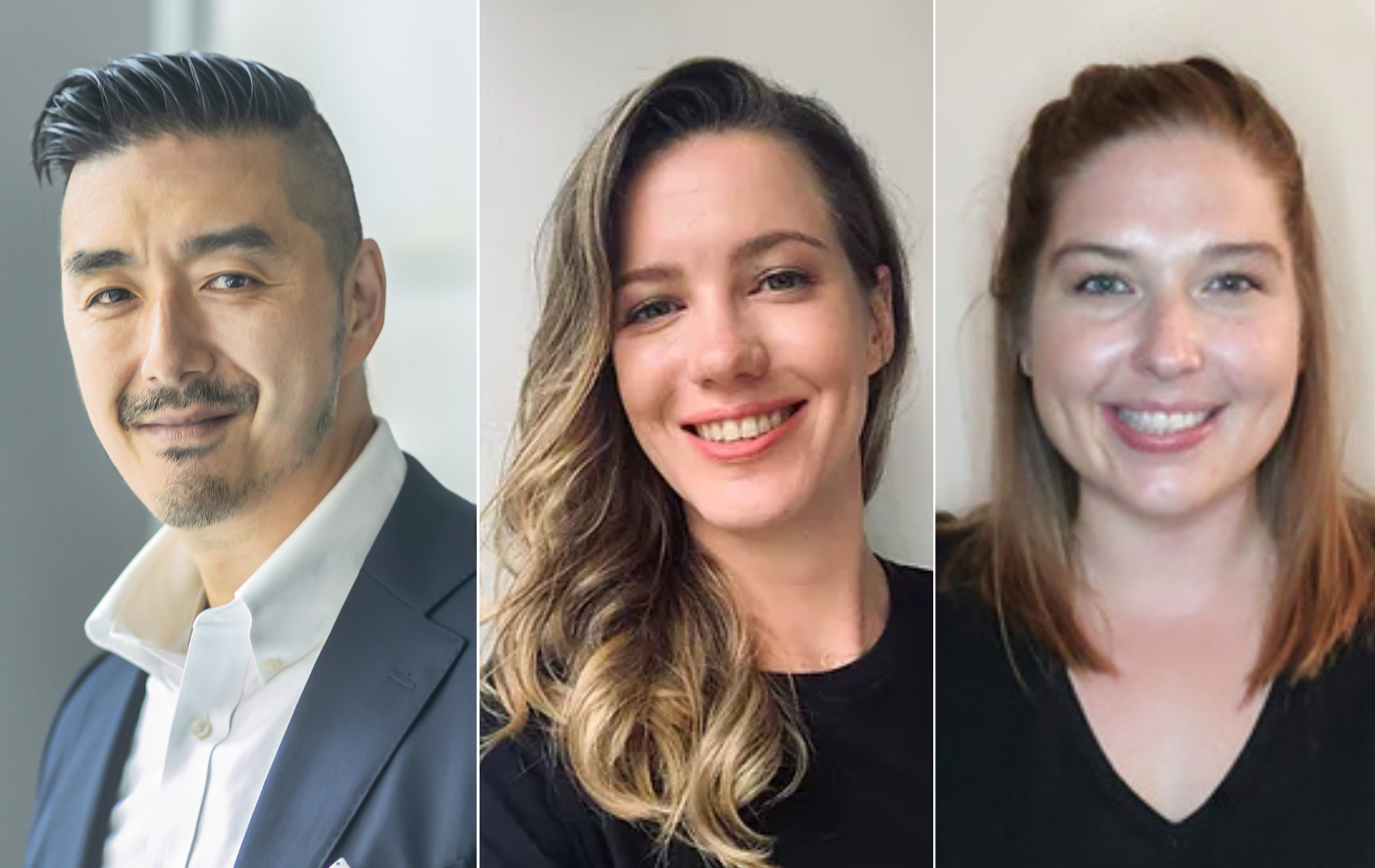Follow CDE on Socials

Prof Dean Ho
Head, Department of Biomedical Engineering
Director, The N.1 Institute for Health (N.1)
Dr Agata Blasiak
Head of Digital Health Innovation at N.1 Labs
Dr Alexandria Remus
Research Fellow at N.1 Institute for Health
Follow CDE on Socials
Developed at the College of Design and Engineering, NUS
, CURATE.AI is a personalised medical platform that dynamically tailors training and treatment for each individual.
Bigger is not necessarily better, at least not in the field of personalised medicine, says Professor Dean Ho.
In fact, Prof Ho, Head of Biomedical Engineering at the College of Design and Engineering, NUS
and Director of the N.1 Institute for Health, says that sometimes the most impactful innovations come about when you do more with less.
Whilst the use of ‘big data’ has exploded in healthcare and other sectors in recent years, his research team has gone in the opposite direction. To achieve what Prof Ho calls “practice changing medicine”, the team’s research takes a cross-disciplinary approach to innovation that spans engineering, medicine and many other disciplines.
CURATE.AI, their AI-based platform, promises to revolutionise the methods that doctors not only treat their patients with, but also the ways that people train their bodies and minds.
By studying a patient’s responses to different dosages over time, CURATE.AI can extract what personally works best for them and recommend future treatment intensities or even options. This is not only limited to drug prescriptions and combinations but can also apply to workout routines or even cognitive training.
The platform looks at how a patient responds to a certain treatment or training plan: whether they are recovering from a specific illness, or whether their physical performance is improving after exercise. By modelling what the individual responded best to, CURATE.AI can continue tailoring their future healthcare plans for maximum effectiveness.
To date, the research team’s work has been focused primarily on managing drug dosages for cancer treatments. The best drug dosages, Prof Ho says, are not necessarily the highest possible doses that a person’s body can tolerate. In fact, if doses of drugs get large enough, they can often produce toxicity effects – most evident in the radiation therapies used to treat many cancers.

Fine-tuning dosing
“Traditional oncology may use data from populations and potentially decades’ worth of previous studies to give patients fixed high doses,” Prof Ho says. “With regards to fine-tuning chemotherapy dosing, in cases where a patient is responding and the tumour is getting smaller but the toxicity is high, drug dosing may be reduced to manage side effects.”
In conventional modes of prescribing long-term treatment plans, doctors generally do not attempt to dynamically tweak their patient’s prescriptions to see what they respond to best. Doses are often fixed at the highest tolerable levels with the potential of achieving positive effects.
CURATE.AI flips this on its head.
“In our case, we are adjusting the dose using efficacy,” Prof Ho says. “Which means that we're not solely trying to achieve the highest dose possible’; we are varying the doses with CURATE.AI to really calibrate to how patients respond, and then giving them the right dose, definitively.”
The model prides itself on the use of ‘small data’. It does not consider factors that many medical professionals conventionally consider to be impactful, such as the patient’s height, weight, medical history, age, and sex.
Instead, such considerations are set aside for the core metric of medical interventions: is the treatment working?
CURATE.AI looks in particular at biomarkers - biological signatures in the body that indicate the progression of a disease, such as levels of a specific molecule in the blood.

‘Goldilocks Zone’
Prof Ho’s team studies these biomarkers to measure how a patient responds to a single round of treatment, adjusting the amounts until biomarker measurements tell them that they have hit the ‘Goldilocks Zone’ of dosage: not too much, and not too little.
Each patient has a unique profile that shows what dosages and drug combinations work for them. This profile can change day by day as their condition evolves, but CURATE.AI is designed to adapt to those changes.
The team has already completed a pilot clinical trial at the National University Hospital in Singapore, where it has been tested with treatments for gastrointestinal cancer. Under the trial, 10 patients had their prescriptions tailored by the platform.
“We’re seeing nearly complete 98 per cent acceptance of the CURATE.AI recommended doses by doctors and, on average, a 20 per cent reduction of the dose needed,” Prof Ho says.
In June, the results were presented by Dr Agata Blasiak, the Head of Digital Health Innovation at N.1 Labs, at the annual conference of the American Society of Clinical Oncology (ASCO). The society is the world’s leading professional organisation in the field of clinical cancer treatment and its annual meeting showcases the most promising cutting-edge research.
After its promising results in the pilot scheme, Dr Blasiak hopes for CURATE.AI to grow to cover other types of cancer, such as multiple myeloma, as well as disorders like hypertension. She imagines the widespread use of the platform to resemble a plugin where physicians have the option to see a recommended dose calculated by CURATE.AI, given the previous doses that their patients have received.
The small data consumption of CURATE.AI means that it requires no heavy computation and can theoretically be deployed in the standard computer system healthcare professionals already use.
After the AI-based platform proves its mettle in adjusting prescriptions, researchers can begin dissecting the deeper questions behind each patient’s individualised responses. Such questions, Dr Blasiak says, include: What do these different responses mean? And why do some patients have certain responses over others?
Expanded applications
But these profiles are not just being deployed to optimise drug prescriptions. Dr Alexandria Remus works with Prof Ho’s team to apply the CURATE.AI technology to physical and cognitive training. The same way that individual patients respond differently to different dosages, they may also uniquely respond to different intensities of training day-by-day and over time.
For example, most physical training programmes that athletes follow naturally have varying cycles of different intensities to allow their bodies to recover and build muscle. But unlike those programmes, which are designed by human coaches and are generally a one-size-fits-all regimen, the people following Dr Remus’s workouts have their programmes guided by CURATE.AI and are designed to maximise their physical performance by optimising their own recovery.
To do so, the platform looks at an individual’s heart rate recovery as an indicator of their physical fitness in response to various intensities and adjusts the “dose” of training accordingly.
The same approach is also being applied to cognitive training for different populations, including young adults, seniors and patients with brain cancers. Participants play a tablet-ready digital therapeutic game that challenges their mental aptitude whilst N.1’s model scales the difficulty of the game to their performance day-by-day and over time.
Dr Remus says she is grateful for the opportunity to create something that one day may be able to help treat brain cancer patients receiving chemotherapy as well as senior citizens. “I have relatives who have had Alzheimer's and dementia, so it's nice to be able to hopefully make something that can help that area as well,” she says.
Building on their research, the CURATE.AI team are looking to expand their horizons to different therapies and treatments in years ahead, and advancing those currently under study to randomised controlled trials. The expansion into making a prototype that can be widely deployed in hospitals and in the community presents its own interdisciplinary challenges.
“This kind of work goes far beyond expertise in technology, engineering and medicine. We have behavioural scientists, and experts in implementation and communication,” Prof Ho says. “Leading ecosystems provide actionable access to a broad community of stakeholders. There are only a handful of places in the world where this can happen, and Singapore and NUS represent ideal examples that catalyse life-saving outcomes with first-in-kind innovation.”
The team is now looking to tap CURATE.AI’s potential in other diseases. Prof Ho says that the possibilities are endless, as long as scientists can measure a patient’s response to a therapy. Immunotherapy, hypertension treatments, and heart medication dosing are just a few examples of where they are looking to apply their technology next.
Drugs that, at first glance may seem ineffective, but are really just given in suboptimal amounts may have their power finally unlocked.
People
Dr Dean Ho ▏ Professor, Head of Biomedical Engineering at the College of Design and Engineering, NUS
and Director of the N.1 Institute for Health ▏ LinkedIn Profile
Dr Agata Blasiak ▏ Head of Digital Health Innovation at N.1 Labs ▏ LinkedIn Profile
Dr Alexandria Remus ▏ Research Fellow at N.1 Institute for Health ▏ LinkedIn Profile
Related Departments/ Centres
If you are interested to connect with us, email us at cdenews@nus.edu.sg








